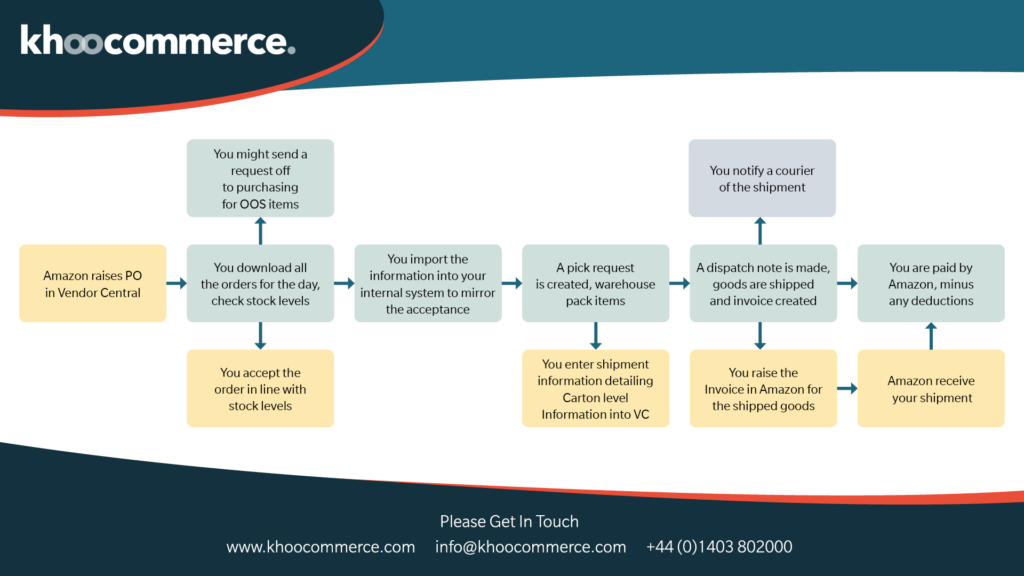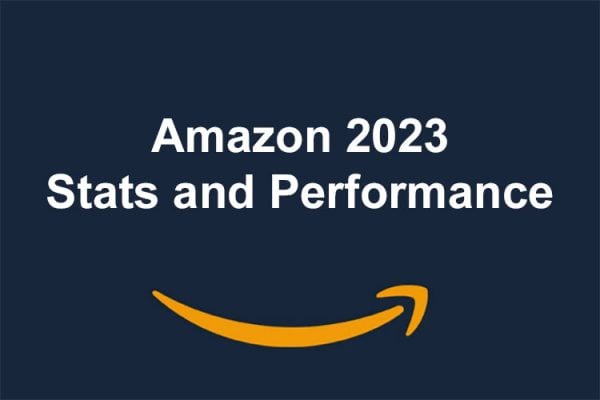 Selling to Amazon as a Vendor is very different to selling on Amazon as a merchant. If you are a retailer or brand then this Amazon Vendor Operational Guide guest written by Christopher Khoo of KhooCommerce is essential reading to assist you deciding how to set up your systems and the most efficient way of shipping to Amazon
Selling to Amazon as a Vendor is very different to selling on Amazon as a merchant. If you are a retailer or brand then this Amazon Vendor Operational Guide guest written by Christopher Khoo of KhooCommerce is essential reading to assist you deciding how to set up your systems and the most efficient way of shipping to Amazon
Amazon Vendor vs Seller
A first party (1P) Vendor relationship with Amazon involves selling to Amazon much like you would sell to any other B2B customer or reseller. Because of this, Amazon has control over the pricing and typically ranks the product above 3P products, as well as buying large volumes of the product for themselves.
There is much to say about successfully negotiating your relationship and contract agreements, as well as marketing and optimising of product listings; those topics are historically well covered by agencies and consultants. This article explores a sometimes overlooked topic – the nuts and bolts of processing the orders and fulfilling shipments.
Amazon Vendor Operational Guide – Process Overview
Here’s a broad-brush diagram of the operational process that you might do as a vendor:
There are typically a few stages that can be a manual process that take a lot of time:
- Accepting the orders in line with stock and Importing orders into internal ERP
- Filling out shipping detail
Accepting Orders and Import into ERP
In my experience, this is one of two major stages that cause a headache. This is your Monday/Wednesday morning job that can delay your warehouse on the fulfilment side of things. There are generally a few approaches businesses use:
|
|
|
|
|---|---|---|---|
| Manipulate Data in spreadsheets and import data into ERP manually | Good for getting started and early stages with Vendor Central Relationship | As growth increases, time increases linearly. This can reach a full time position about £500k/Month | |
| Spreadsheets + Macros, Import CSV files and update Amazon through their portal | Good as a stopgap and as growth increases | Limited/No functionality on shipments and ASNs. Order Processing managed by a spreadsheet. | |
| Orders flow into your ERP through an EDI Interface. Sometimes Invoices flow back from ERP back to Vendor | Order and Invoice Data no longer manual tasks | Shipment data still done manually. Limited use of integration | |
| Order Processing System and Dispatch process fully synchronised with Amazon via EDI | Fully synchronised system automates and systemises orders | Setup time and cost required, might vary depending on your ERP. | |
Your ERP might not be EDI/API compatible, in which case there are options for systems that can act as an interface. For example the communication is EDI/API to Amazon from the interface but then a flat file (csv, xml, json) to your ERP.
Completing an ASN
Carton level information is required for all shipments sent to Amazon Vendor. This means that each shipment needs to detail exactly which items in which quantities are in each box. This is particularly challenging for orders that contain both Case packs and loose items, for example you sell packs of 6 of ASIN1 but sell ASIN2 as loose items that get packaged with other items.
There are four methods to handle shipping, they are:
- No Labels
- AMZNCC (Amazon Container Code)
- SSCC (Serialised Shipment Container Code)
- GTIN Receive (Global Trade Identification Number Receive)
The relative advantages of each are below:
|
|
|
|
|---|---|---|---|
| Just send cartons to Amazon, courier label only. | Very quick and easy, potentially suitable for high value items like small domestic appliances or where turnaround time is too high cost. | Chargeback Carton Information Compliance at £0.12/unit. For example one carton with 24 units will land a £2.88 charge. | |
| Label generated from Amazon’s system | Able to use from Amazon straight away. | Typically two Amazon labels per box (plus courier label). Manually entering information can be slow. | |
| Same detail as AMZNCC but sent via EDI. | Can be generated directly from your WMS/ERP | Requires software setup. Some systems can’t generate SSCCs. | |
| For standard cartons that have barcodes on them | Perfect for single SKU cartons. | Requires GDSN Setup and sync to Amazon. Not suitable for mixed/loose cartons. | |
Completing an ASN – which is right for you?
The different options suit different businesses. I came across one business that sold Coffee machines and other small domestics appliances, and for them, with a £100M/year account, labelling issues costing £40K/year was a drop in the ocean of their expenses. And the time taken to re-label each box was simply not worth it. (In my opinion they would have been better off with GTIN Receive, anyway).
As a general rule of thumb, you want to use either SSCC or GTIN receive as your gold standards. However if you are smaller, or just not that invested into Vendor central as a platform, then either no labels or AMZNCC are also OK. The things that normally limit the use of SSCC and GTIN labels are technical ones, namely that the Warehouse management system you are using is not compatible with SSCC and EDI. At KhooCommerce we help vendors get technology to print shipping labels directly from the warehouse floor and send all the information to Amazon without the need to key it into the Amazon portal, but still giving you the flexibility of loose or case packs.
The more standardised your shipments and SKUs are, the more GTIN Receive will suit you. For example, Coca-Cola would be perfect for GTIN receive. Few (<50) SKUs, large volumes, standard case packs. The wider and more varied your catalogue becomes, and the more you ship loose items, the more appropriate SSCC becomes. If your WMS cannot generate SSCCs or create labels with this detail on it, then look for a GS1 certified solution that is approved for creating this barcode. As a shameless plug I'm pleased to say KhooCommerce are a fully certified GS1 partner for SSCC, EDI and GTIN usage.
Final note – if you have perishable products but want to use GTIN Receive you will need EDI in some format to convey the batch number and expiry information.
Amazon Vendor – Invest in systems if you can
As a summary, Amazon Vendor is a great business opportunity, and if leveraged correctly can deliver huge growth. There are operational considerations to running the account properly and it’s worth doing a process review of your operations to monitor how many touch points a given order has.
I talk with businesses all over Europe and the USA about their Amazon processes, and while this is a general summary, no two businesses are the same. As sales begin to grow, and routes to market expand, the interest in exploring systems expands. It’s worth mentioning I haven’t discussed Collect (WePay) Shipments in this article, or Direct Fulfilment, as they warrant their own discussion. The essence is quite straightforward though – Collect require a pre-booking, and Direct Fulfilment is drop ship, typically used for bulkier items like washing machines and so on.
Whether or not your system can use EDI or API, systems can make your life much easier (and cheaper) than hiring more staff. Usually businesses spend half to a full time employee’s worth of effort processing orders, which costs the business £20-35K a year in costs (not to mention error rate, and it’s not the most exciting work). If you are considering hiring more admin staff to process orders, it might be that investing in a systems platform could be a cheaper, more efficient, scalable option for you. However if you are a smaller vendor, then it might be that basic spreadsheet management suits your processes better.
Either way I would be pleased to hear from you and discuss your setup and any issues you have. You can reach me on LinkedIn or on the web.












2 Responses
Thanks for the article post. Happy to talk more with anyone interested either on my LinkedIn or on our website!
Ty